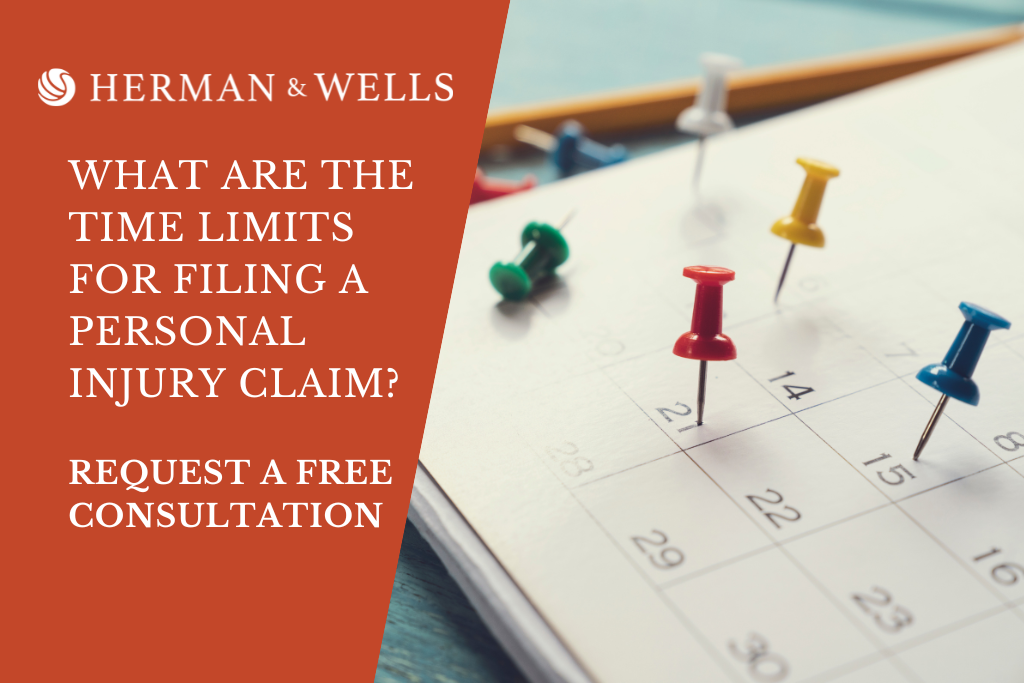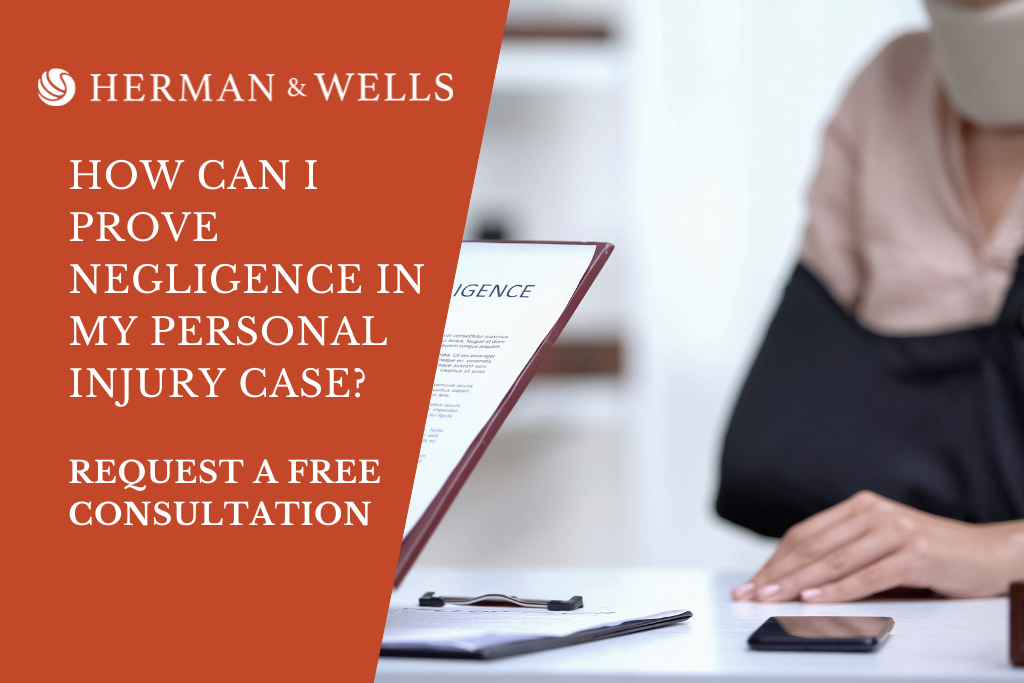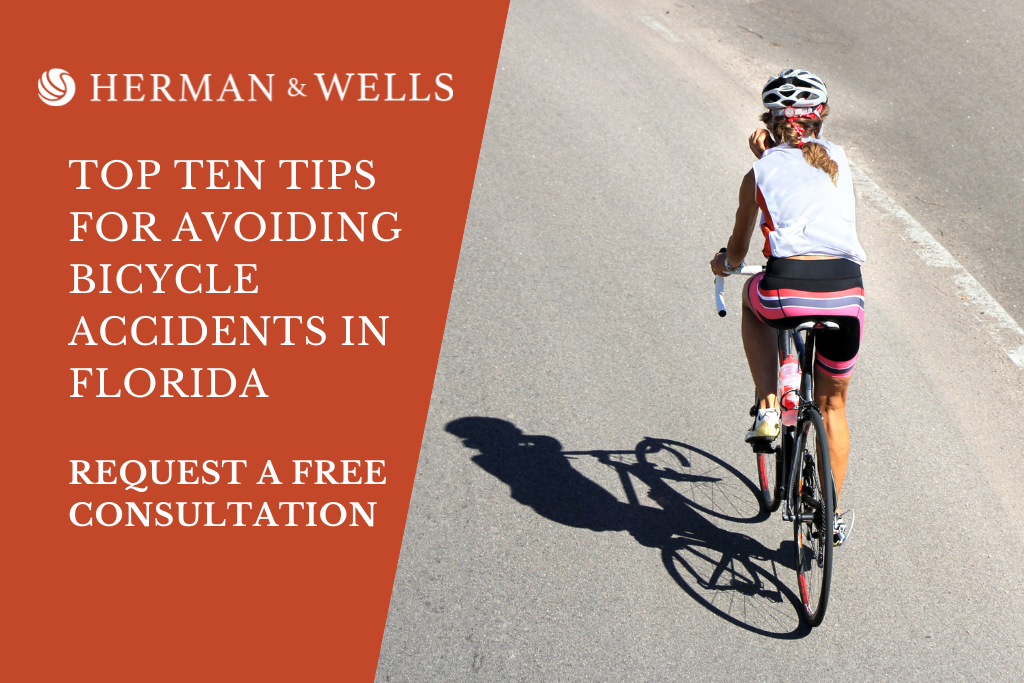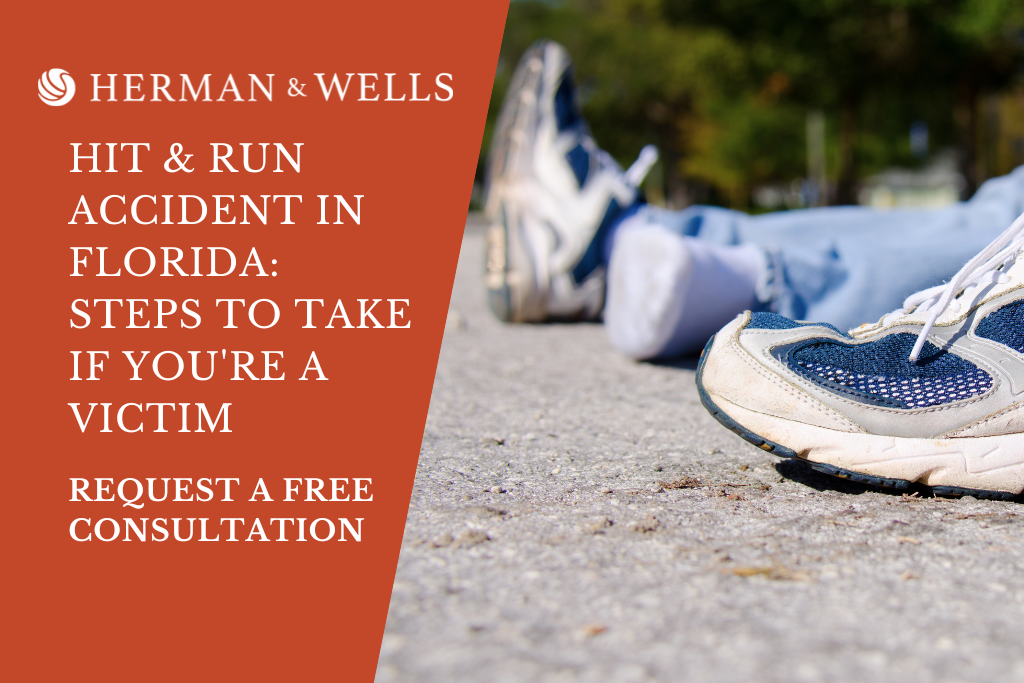In the vibrant city of St. Petersburg, Florida, you and fellow motorcycle enthusiasts take to the open roads to savor the thrill of riding. However, this exhilarating journey can sometimes take an unexpected turn due to the most common causes of motorcycle accidents.
In this post, we’re delving into these factors to shed light on the key reasons behind motorcycle accidents in St. Petersburg. Whether you’re a rider or a concerned resident, this information will help you stay informed and potentially avoid an unnecessary accident.
If you’ve been involved in a motorcycle accident and require legal assistance, remember that our dedicated motorcycle accident lawyers in Florida are here to advocate for you. Call us at (727) 821-3195 for a free consultation and let us help you with your motorcycle accident claim.
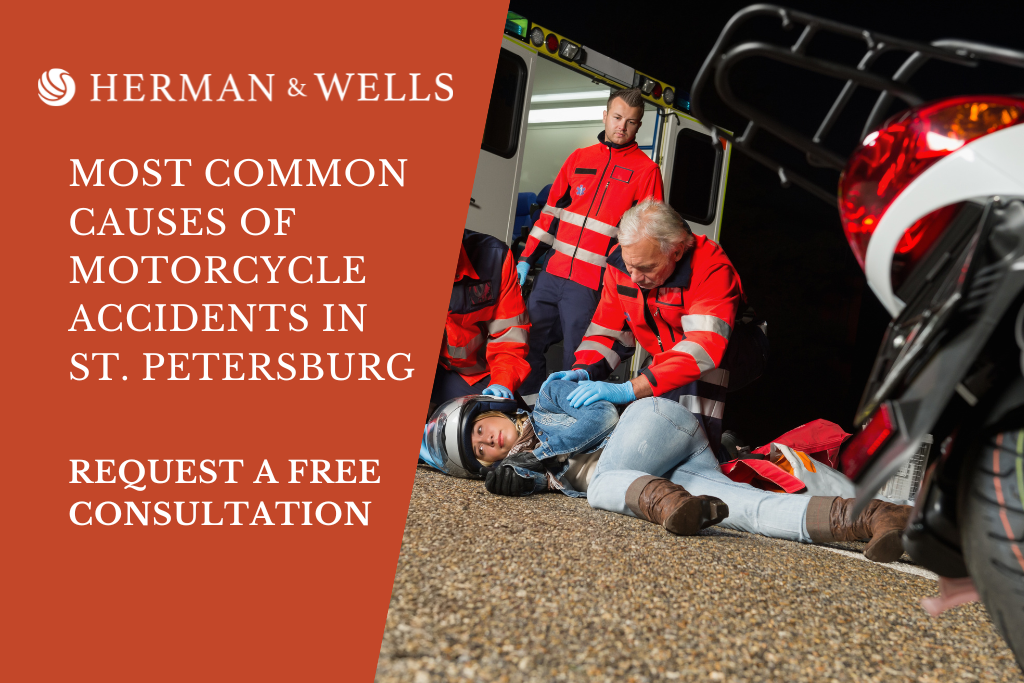
The Cliff Notes: Key Takeaways From This Post
- 1Motorcycle accidents in St. Petersburg, Florida, can result from various factors, including traffic congestion, poor road maintenance, and rider behaviors.
- 2Riders should be cautious when navigating high-traffic areas and during rush hour to avoid accidents.
- 3Common driver distractions, such as mobile phone usage and in-car entertainment, can lead to accidents, and riders should remain vigilant.
- 4Hazardous road conditions, construction zones, debris, and a lack of proper signage can pose risks to motorcyclists.
- 5Weather changes, especially sudden rain showers, should be anticipated and managed to maintain safe riding conditions.
- 6Speeding is a significant contributor to accidents, and riders should adhere to speed limits and maintain safe following distances.
- 7Enhancing visibility with reflective gear, auxiliary lights, and proper lane positioning is crucial for rider safety.
- 8Mechanical failures are a risk, but regular motorcycle maintenance can prevent accidents caused by mechanical issues.
- 9Contact our St. Petersburg motorcycle accident attorneys if you’ve been injured in an accident; we’re here to support your legal needs.
Heavy St. Petersburg Traffic
St. Petersburg’s thriving urban environment can sometimes lead to challenging traffic conditions, contributing to motorcycle accidents. In this section, we’ll explore the impact of traffic congestion and how it relates to motorcycle accidents in the city.
Navigating High-Traffic Areas
St. Petersburg’s streets can become densely congested, especially during peak hours and special events. Motorcycle riders face unique challenges when navigating through high-traffic areas, and understanding these challenges is crucial for accident prevention.
The Impact Of Rush Hour
Rush hour in St. Petersburg can test the patience of any motorist, and motorcycle riders are no exception. We’ll examine how rush hour traffic patterns can influence the likelihood of motorcycle accidents, providing valuable insights for both riders and residents.
Driver Distractions And Unexpected Circumstance
In the hustle and bustle of St. Petersburg’s roads, driver distractions and unexpected circumstances play a significant role in motorcycle accidents. Let’s delve into the common driver distractions and the unexpected circumstances that riders should be aware of to enhance safety.
Common Driver Distractions
- Mobile Phone Usage: Drivers often engage with their mobile phones, texting or talking while on the road. This distraction diverts their attention from the surroundings and increases the risk of accidents.
- In-Car Entertainment: Modern vehicles come equipped with advanced entertainment systems, tempting drivers to adjust settings or watch videos while driving. Such distractions can lead to reduced reaction times and accidents.
Unexpected Circumstances
- Sudden Lane Changes: St. Petersburg’s traffic can be unpredictable, with drivers making sudden lane changes without signaling. Motorcycle riders must be vigilant to avoid collisions when faced with unexpected lane maneuvers.
- Weather Changes: Florida’s weather can change rapidly, with sudden rain showers impacting road conditions. Riders should be prepared for unexpected weather changes that affect visibility and road grip.
Hazardous Roadways In St. Petersburg
Navigating St. Petersburg’s roadways can be challenging, especially when encountering hazardous conditions. In this section, we’ll explore the factors that contribute to hazardous roadways in the city, highlighting potential risks for motorcycle riders. Understanding these road hazards is vital for accident prevention.
Poor Road Maintenance
St. Petersburg’s road infrastructure may suffer from inadequate maintenance, leading to potholes, cracks, and uneven surfaces. These road defects can pose significant risks to motorcyclists, causing loss of control and accidents.
Construction Zones
Ongoing construction projects can disrupt traffic flow and create hazardous conditions for riders. Narrowed lanes, debris, and unpredictable lane shifts can increase the likelihood of motorcycle accidents in these areas.
Roadway Debris
Debris such as gravel, leaves, or litter on the road can reduce traction and stability for motorcycle riders. It’s essential to watch out for and navigate around roadway debris to prevent accidents.
Lack of Proper Signage
Inadequate or confusing road signage can lead to rider confusion and potential accidents. Clear and visible signage is crucial for guiding motorcyclists safely through St. Petersburg’s roadways.
The Effect Of Weather On Road Safety
Florida’s weather can be unpredictable, with sudden rain showers and thunderstorms. Wet roads reduce traction and visibility, making it essential for riders to exercise caution during adverse weather conditions.
Speeding In Florida
Speeding is a prevalent issue on Florida’s roadways, and it significantly contributes to motorcycle accidents. In this section, we’ll explore the challenges posed by speeding and the preventative measures that motorcyclists can take to stay safe.
Preventative Measures For Motorcyclists
To ensure you’re seen by other drivers, use bright and reflective clothing and gear. Ensure your motorcycle’s lights are functioning correctly and consider using additional lights or reflective tapes on your bike. Always position yourself in the lane where you are most visible to other drivers, and avoid riding in blind spots. Making eye contact with drivers at intersections can also help in ensuring they have seen you. Remember, the more visible you are, the safer your ride will be.
Adhere To Speed Limits
Always obey posted speed limits and adjust your speed according to road and weather conditions. Slowing down can provide you with more reaction time to avoid potential hazards.
Maintain A Safe Following Distance
Keep a safe distance from the vehicle in front of you. This distance allows for better visibility and ensures you have time to stop if needed.
Avoid Tailgating
Tailgating is dangerous for motorcyclists. Maintain a safe space between your motorcycle and the vehicle ahead to reduce the risk of rear-end collisions.
Use Defensive Riding Techniques
Practice defensive riding by staying alert, scanning your surroundings, and anticipating the actions of other road users. Defensive riding can help you react to speeding vehicles and avoid accidents.
Motorcycle Invisibility To Other Vehicles
Motorcycle riders often face challenges in being visible to other vehicles on the road, which can lead to accidents. In this section, we’ll explore the importance of visibility and provide tips on increasing it.
Use Reflective Gear
Wearing reflective clothing and accessories significantly enhances your visibility, especially during low-light conditions or at night. Reflective gear ensures that other motorists can see you from a distance.
Install Auxiliary Lights
Adding additional lights to your motorcycle, such as auxiliary LED lights, improves your visibility. These lights can make you stand out, reducing the risk of accidents.
Keep Headlights On
Always ride with your headlights on, even during the day. It makes your motorcycle more conspicuous to other drivers, increasing the chances of being noticed.
Position Yourself Strategically
Choose lane positions that make you more visible to other drivers. Avoid staying in blind spots and position yourself where you can be seen clearly.
Signal Your Intentions
Use turn signals and hand signals to communicate your intentions to other road users. Signaling helps drivers anticipate your moves, reducing the likelihood of accidents.
Risky Riding Behaviors Among Florida Motorcyclists
Risky riding behaviors can pose significant dangers to motorcyclists on Florida’s roads. In this section, we’ll explore some of these behaviors and provide insights into recognizing and avoiding them.
Excessive Speeding
Recognize the dangers of excessive speeding and the increased risk it poses. Avoid the temptation to exceed safe limits and prioritize responsible riding.
Reckless Weaving
Weaving in and out of traffic can be perilous. Avoid reckless maneuvers and maintain a steady lane position to ensure your safety.
Stunt Riding
Performing stunts and tricks on public roads is extremely hazardous. Resist the urge to engage in stunt riding and save such activities for controlled environments.
Tailgating Other Vehicles
Riding too closely to the vehicle in front of you is dangerous. Maintain a safe following distance to allow for adequate reaction time.
Ignoring Traffic Signals
Disregarding traffic signals and signs increases the risk of accidents. Always obey traffic laws and signals to protect yourself and others.
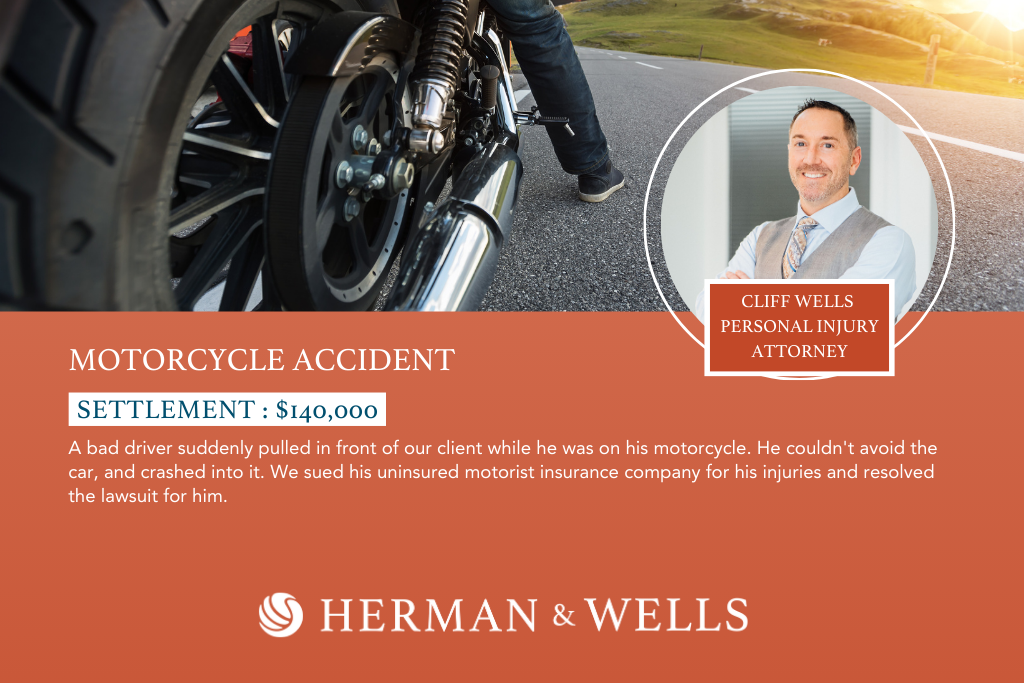
Alcohol And Drug Impairment In Accidents
Alcohol and drug impairment significantly increase the risk of motorcycle accidents in Florida. Riding under the influence impairs judgment, coordination, and reaction times, making it a dangerous choice for motorcyclists. Understanding the severe consequences of alcohol and drug impairment is crucial for preventing accidents and ensuring road safety in the Sunshine State.
Inexperienced Riders On The Road
Inexperienced motorcycle riders, especially those who are new to riding, are more susceptible to accidents due to their limited knowledge and skills. These riders may struggle with handling their motorcycles, navigating traffic, and making quick decisions in challenging situations. It’s crucial for new riders to undergo proper training and gain experience gradually to enhance their riding abilities and safety on the road. Experienced riders can contribute to safer road conditions by being patient and considerate toward less-experienced motorcyclists.
Mechanical Failures Leading To Accidents
Mechanical failures in motorcycles can result in accidents, posing a significant threat to riders’ safety. Common mechanical issues include brake failures, tire blowouts, and engine problems. To prevent accidents due to mechanical failures, motorcyclists should perform regular maintenance, including brake checks, tire inspections, and engine maintenance.
Additionally, riders should be attentive to any unusual sounds or handling issues while riding, as these could indicate potential mechanical problems that require immediate attention. Proper maintenance and vigilance can help ensure the safety of motorcycle riders on the road.
The Importance Of Regular Motorcycle Maintenance
Regular motorcycle maintenance is crucial for ensuring the safety and reliability of your bike. Routine tasks such as brake checks, tire inspections, and engine maintenance can prevent accidents caused by mechanical failures. Adhering to a regular maintenance schedule, riders can enjoy a safer and more trouble-free riding experience in St. Petersburg.
Injured In An Accident? Contact Our St Petersburg Motorcycle Accident Attorneys
Your safety on the road is incredibly important, but we understand that accidents can happen, no matter how careful you are. If you or someone you care about has been hurt in a motorcycle accident in St. Petersburg, know that our team of dedicated motorcycle accident attorneys is here to help.
Our goal is to provide the support you need, protect your rights, and ensure you receive the compensation you rightfully deserve. Contact our St. Petersburg motorcycle accident attorneys today to schedule a free consultation at (727) 821-3195.

